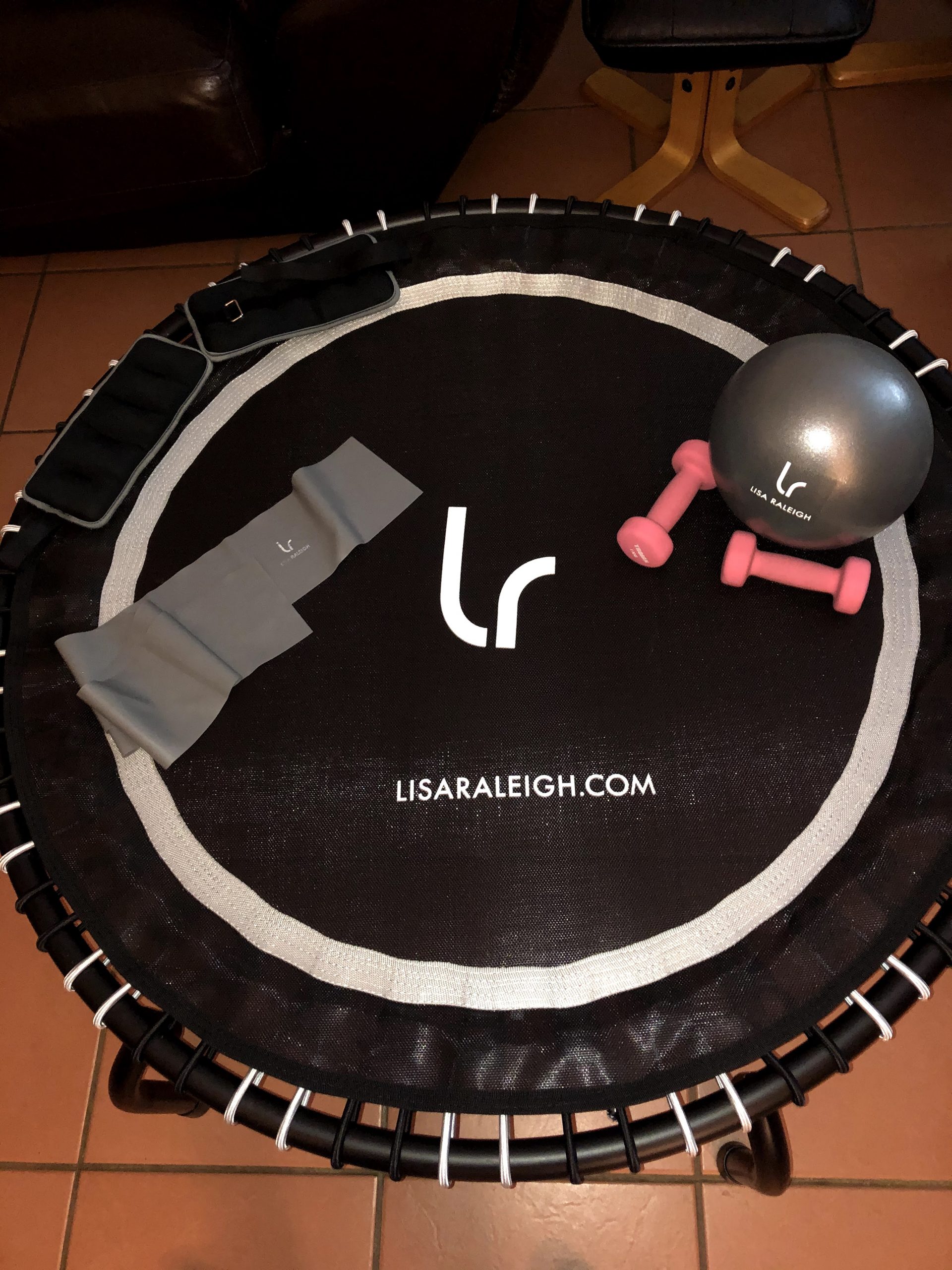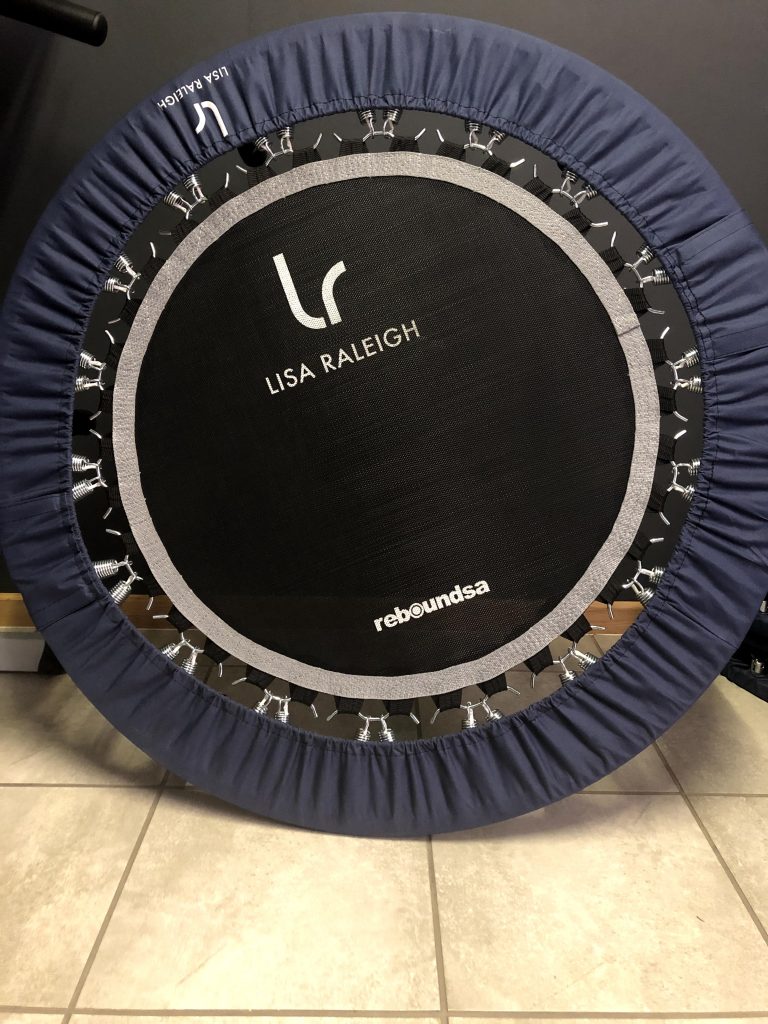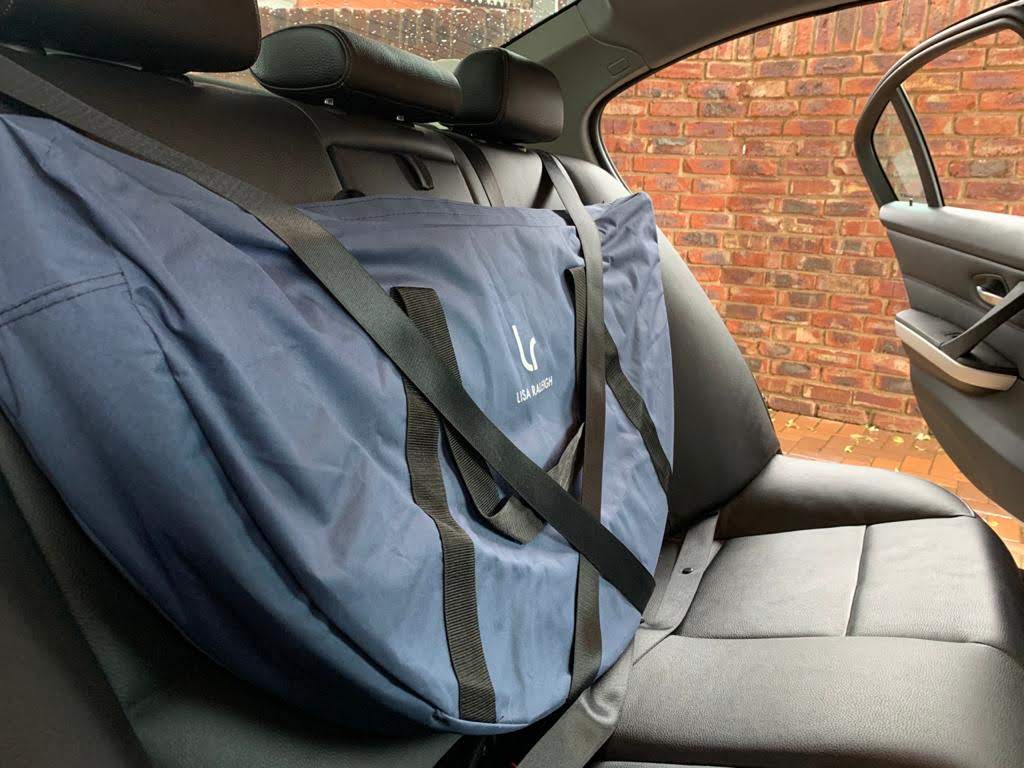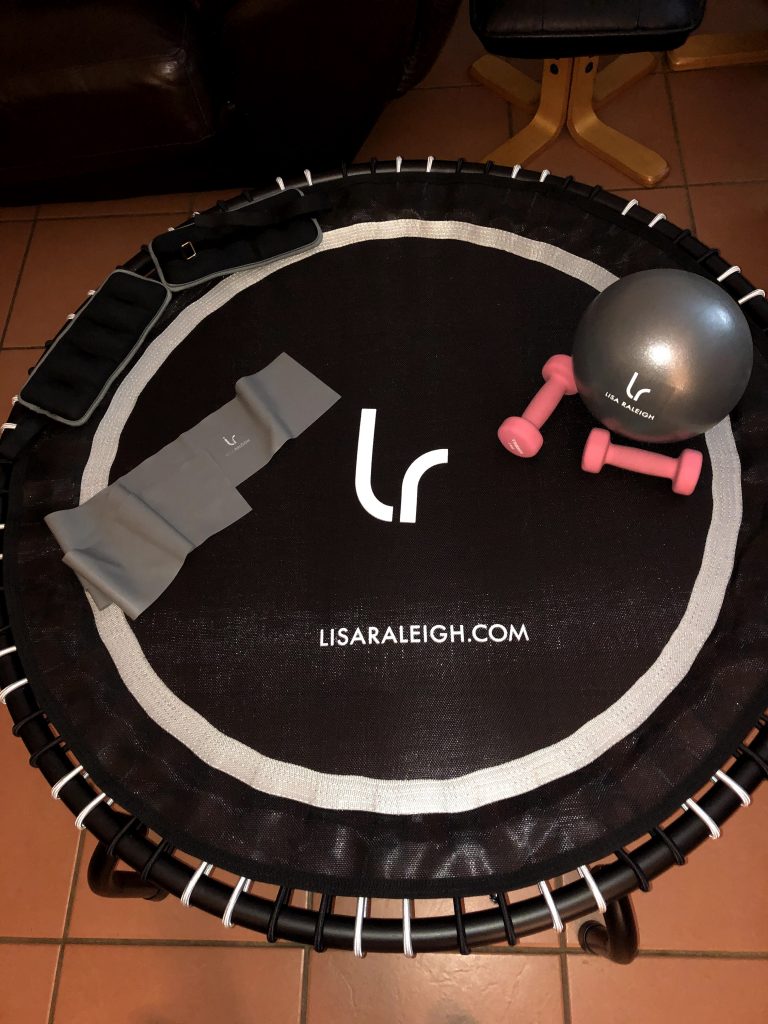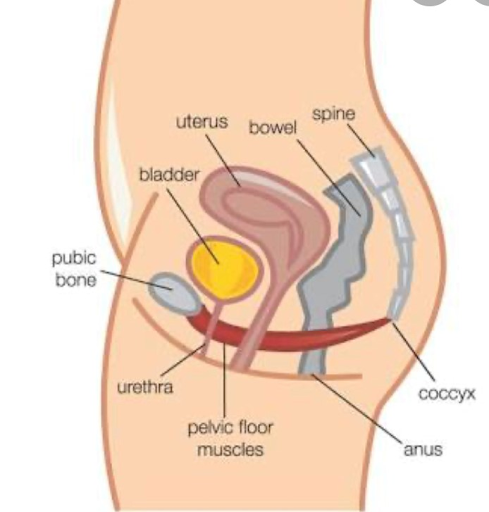As I’m sure you know by now, rebounding is exercise that you do on a mini-trampoline. It is fun, and you will burn a lot of calories. There are so many benefits to rebounding, to see a list please click here. There are currently two different types of rebounders available and that is a spring and a bungee rebounder.
Spring rebounder
A spring rebounder is a rebounder where the mat is tied to the rim with steel springs. Spring rebounders tend to be more affordable and more widely available. This rebounder is great for travelling as it can fold up, be placed into a special bag and will easily fit into the boot of your car or even the back seat. In the photo below you will see how my hubby strapped it against the back seat to go with us on holiday. Thus you will have no more excuses not to rebound while on vacation.
The diameter of the spring rebounder is 101 cm and the diameter of the mat is 69 cm and can take up to a maximum of 120kg. The mat offers a firm bounce which means that you will not injure yourself easily as your ankles will not roll as you jump on the rebounder. Should it happen that one of the springs come loose you can easily replace it as each spring is separately attached to the mat.
The problem that I have with the spring rebounder is that it is steel on steel which means that the rebounder does become all squeaky and loud after a few bounces. Now if it is only you in your home I’m sure it will be fine, but if you share you home with someone I can just imagine how irritating sound that can be. Same goes for instructors – if you have 5 rebounders in your class all squeaking it can make a big noise which will drive you completely mad.
I’ve also been very unlucky in the mat department. In the year I’ve been rebounding on a spring rebounder, I’ve had to replace the mat of the rebounder three times already. Now this might not seem like a huge deal to you, but believe me it is. To change a mat on a spring rebounder is really very hard work as the springs are very tight and difficult to hook onto the mat. I’m not strong enough on my own, so I’ve always asked my husband to assist me with this and even with his help it is a very hard job to do.
As this can’t be done in under an hour at the quickest, it really frustrates me as it means that if stitches come loose on the mat during your rebounding session, you can’t just quickly change mats, thus your rebounding session ends just there. If you don’t have an extra mat, you have to take the one you have in for repairs, which can take a week more or less. If you decide to order a mat that is also not a quick fix as it will also take a week if not longer for your mat to arrive. Thus my advise to you will be to always have an extra mat for emergencies, or even better, have an extra rebounder available if you are a ‘rebounding junkie’ like I am and just can’t make it through the day without your ‘rebounding fix’.
Bungee rebounder
The diameter of the bungee rebounder is 112 cm and the diameter of the mat is 86 cm and can take up to a maximum of 120kg. Once again the mat offers a firm bounce which means that you will not injure yourself easily as your ankles will not roll as you jump on the rebounder. If one of the bungee cords needs replacement it can easily be done as each bungee cord is separately attached to the mat
If I would have to choose between a spring and bungee rebounder, I would definitely choose the bungee rebounder. The mat of the bungee rebounder is quite bigger than that of a spring rebounder – this never even bothered me when I was used to only jumping on the spring rebounder, but now that I’ve jumped on the bungee rebounder for quite a while, I have become quite spoiled.
As there is no steel involved with the bungee cords, you will get a much quieter bounce on the bungee rebounder. It is so to say noise free and that is fantastic. While doing online classes you can easily hear what Lisa is saying and besides for me being out of breath there are no irritating sounds in the house when I do my daily classes at 5 am in the morning,
One again I have been a bit unlucky with the bungee rebounder as the bungee cords broke within the first four months of using it. I had to replace 10 bungees immediately as I couldn’t continue using the rebounder. I literally used the rebounder for one hour session with the 10 new cords, then the stitches of the mat came loose and I had to replace the whole mat. After taking off all the bungee cords to replace the mat, I noticed that more of the cords are no longer useable so in the end I had to replace the mat and all 36 bungee cords.
What I can tell you is that it is much easier to replace the mat of the bungee rebounder than replacing the mat of the spring rebounder. Yes, the cords are still not easy to hook onto the mat but once you have hooked at least one at each side of the mat, it really is much easier to hook the rest of the cords to the mat. And on the positive side – you get a good tricep workout by replacing the bungee cords.
The reality is that I have looked at other rebounders to buy. The Bellicon rebounder is made in Germany and the reviews are extraordinary. The problem is to buy one of those rebounders and to import it to South Africa will cost you close to R20 000 and that is money that no one has laying around!
Lisa Raleigh has in the mean time manufactured a rebounder like the bungee in South Africa. You can read more about the Bungee Studio Deluxe rebounder on her website. I guess I will eventually replace my bungee rebounder’s mat and bungee cords with the South African made one and hopefully my luck will change.
In the end I still prefer the bungee to the spring rebounder. The bungee rebounder is silent and the mat is so much bigger which really is a pleasant experience for me.
To read more about the rebounders that Lisa Raleigh has available or for some awesome accessories and other products, here is a link to the shop.
Hope this article will help you to make an informed discicion about which rebounder to buy.
Until next time, have a happy & healthy day!

